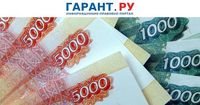Starting in 2026, Russia will implement a new system for indexing insurance pensions, marking a significant shift in how pension payments are adjusted for inflation and economic conditions. This new scheme, approved by the government, will allow for pension increases to occur twice a year, rather than the previous annual adjustment. The first increase will take place on February 1, taking into account the actual inflation rate from the prior year, while the second increase is scheduled for April 1 and will depend on the income generated by the Social Fund of the Russian Federation.
Vice-Premier Tatyana Golikova emphasized the importance of this transition to a two-stage indexation system, stating that it aims to enhance the flexibility and fairness of the pension system. "The existing procedure, which provides for only one increase per year depending on inflation, does not always correspond to current economic conditions," she noted. By adopting this new approach, the government hopes to not only compensate for inflationary costs but also to consider the actual revenues of the Social Fund, potentially leading to a more substantial increase in pensions for recipients.
As part of this reform, from August 1, 2026, there will be another important change for individuals who continue to work after retirement. Pension payments for these working retirees will be recalculated annually based on the insurance contributions they have paid in the previous year. This measure is designed to improve the pension system and ensure fairness for those who remain in the workforce past the standard retirement age.
Economist Svetlana Petrova highlighted the government's commitment to social welfare, recalling President Vladimir Putin's directive to reduce the number of people living below the poverty line by half by 2030. "The main task of this two-stage indexation system is to fulfill these objectives and maintain the image of a social state in the eyes of the population," she explained. Experts believe that even a modest annual increase of 1,500 to 2,000 rubles for individuals with an average pension, combined with other support measures, can significantly improve the financial situation of pensioners.
The implementation of this pension reform will occur in phases, with preparatory work beginning in 2025 and the full rollout of the changes planned from 2026 to 2030. Financial consultant Yulia Khaider explained that the introduction of two-stage indexation is a response to discrepancies between projected and actual inflation rates. Previously, pensions were indexed based on forecasted inflation, which often fell short of real inflation figures. In 2025, pensions were indexed twice: initially by 7.3% on January 1, followed by an additional adjustment of 2.2% on February 1, after the Ministry of Economic Development reported a 9.5% inflation rate.
Looking ahead, indexations of 4.5% and 5.5% are planned for 2026 and 2027, followed by 4% and 4.1% in subsequent years. However, Khaider cautioned that actual inflation might exceed the projected 4% due to the Central Bank's high key rate. This concern underscores the importance of the new system, which aims to align pension increases more closely with the realities of the economy.
Prime Minister Mikhail Mishustin reiterated the government's commitment to improving the pension system during a recent operational meeting. He stated that the dual indexation approach will help bridge the gap between pensions and the actual cost of living. Pensioners can expect to receive their first increase in February 2026, which will include a retroactive adjustment for January.
While the exact mechanism for calculating the second increase remains unclear, Mishustin indicated that it would be based on the growth of the Social Fund's income. The authorities will also consider the average wage levels in the country, which could lead to additional allowances if wages exceed inflation rates. Sergei Gavrilov, chairman of the State Duma Committee on Property, Land, and Property Relations, remarked that this new mechanism is designed to account for various economic factors and should bring pensions closer to the actual prices and wages in Russia.
Currently, more than 33 million people receive old-age insurance pensions in Russia, with the average monthly payment in 2025 estimated at 24,900 rubles. As the government prepares for these significant changes, the focus remains on improving the quality of life for the elderly population. Mishustin highlighted the importance of creating conditions for self-realization among older citizens, encouraging them to engage in leisure activities, sports, creativity, and skill acquisition.
The Strategy of Action in the Interests of Citizens of the Older Generation until 2030, which outlines these reforms, also emphasizes enhancing the healthcare system for the elderly, particularly in rural areas. The government plans to expand advanced methods for early diagnosis and disease prevention, ensuring better medical support for senior citizens. Currently, around 170,000 individuals benefit from long-term care support, a number expected to grow to half a million within six years.
As Russia moves forward with these reforms, the dual indexation of pensions represents a significant step towards addressing the economic challenges faced by the elderly population. The changes are anticipated to provide a more responsive and equitable pension system, ultimately improving the financial security of millions of retirees across the nation.






